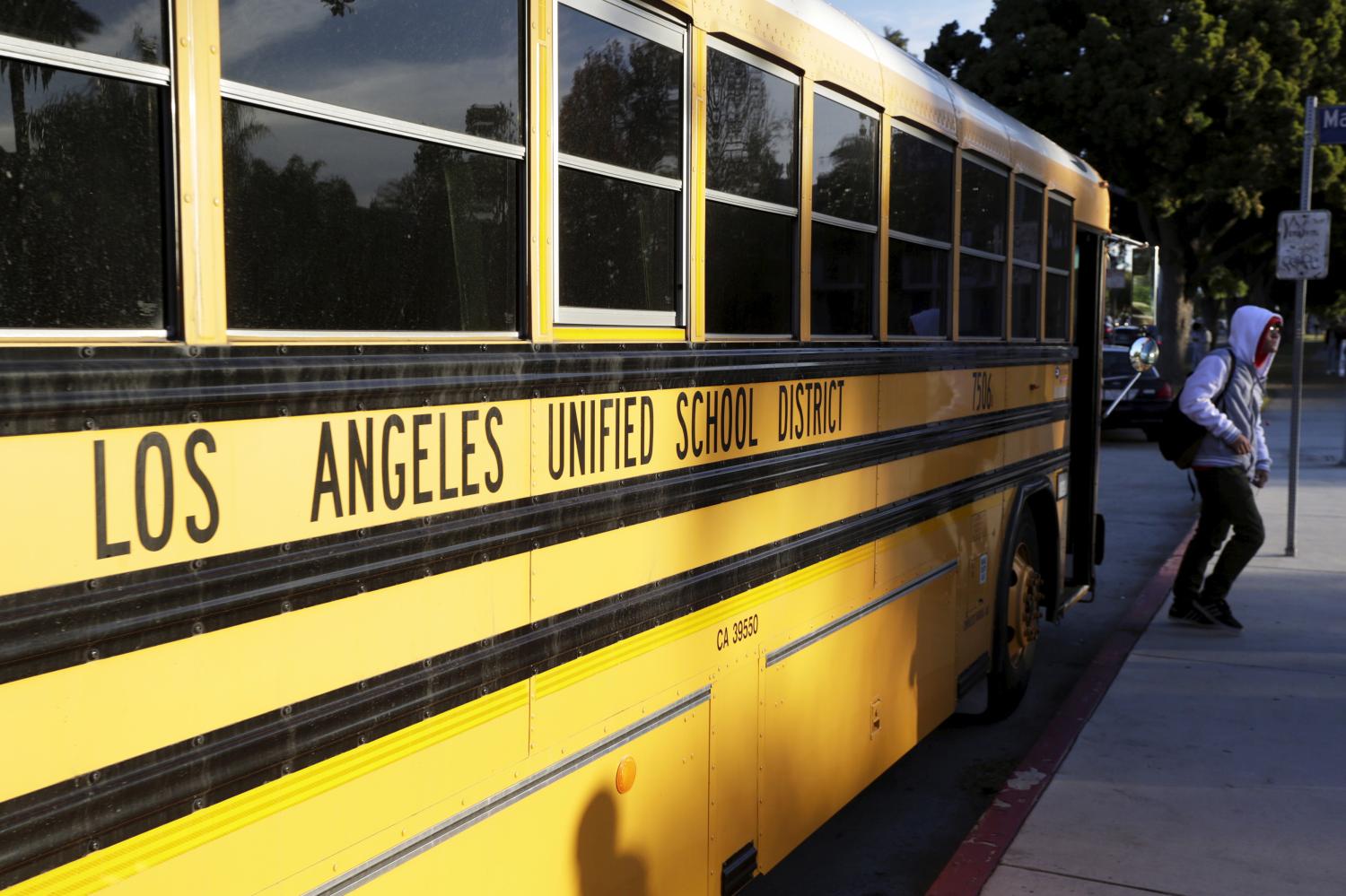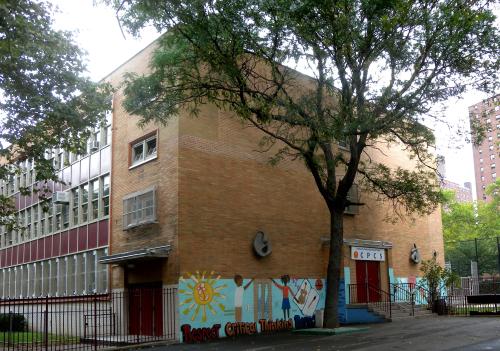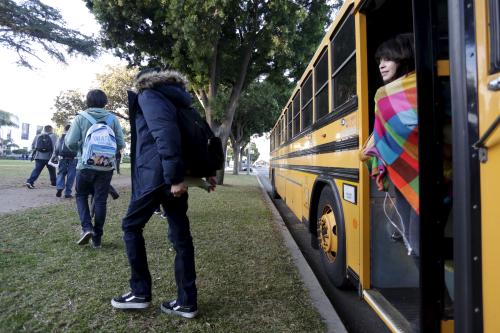What if a school could breakaway from its district to form its own school system? It turns out that in many parts of the country schools can, and these ‘school secessions’ are happening with increasing frequency. According to EdBuild, 71 communities have attempted to secede from larger districts in the recent past, with about 40 successfully doing so since 2000. Such efforts have taken place across the nation, from Alabama to Ohio and Wisconsin to Colorado and Utah. Recent research also shows that racial segregation in America’s public schools is driven more by differences between school districts, rather than within them.
In this paper, we:
- Examine the reasons why communities may be motivated to secede from the larger districts in which they sit
- Describe the variation in the nature and size of school districts across the nation
- Describe laws governing school segregations in different states across the nation
- Present evidence on the relationship between school district secessions and racial segregation, using an ‘imbalance’ score used in our previous work, with a particular focus on Alabama
- Conclude that there is mixed evidence on the influence of secessions on school enrollments by race; but caution that new district lines may entrench and calcify existing racial isolation.
Why do schools secede?
Three main reasons for community schools to secede from their larger districts have been proffered by supporters and critics of school secession:
Local control
The case for local control of schools has a long history. In the 1974 case that blocked district busing in the Detroit area, Milliken v. Bradley, Chief Justice Warren Burger wrote about the importance of local control of schools, saying it provided individuals with more power to make decisions and make schools responsive to local needs.
Racial exclusion
Secession efforts can be born of a desire to exclude racial minorities, as documented in Nikole Hannah-Jones’ article, “The Resegregation of Jefferson County. For example, the 11th Circuit recently ruled that one attempt, in Gardendale, Alabama was pursued “with a discriminatory purpose to exclude black children from the proposed school system.” One Facebook post used by activists supporting Gardendale’s secession, stated: “our community sporting events, our churches are great snapshots of our community. A look into our schools, and you’ll see something totally different.”
Money
There may also be a financial motivation for secession. The ways schools receive money in different districts is far from uniform. In fact, total funding varies quite a bit by district. Take the Oakland, California area. While the Oakland Unified School District gets about $10,329 per pupil to spend, the neighboring and much wealthier Piedmont City Unified district, by virtue of their local parcel tax, get $15,385 per pupil to spend. Additionally, many wealthy schools provide additional funding via Parent Teacher Association spending.
The Current Geography of America’s School Districts
The size and shape of school districts varies across the United States. While the South and Mountain West have districts that often conform to county demarcations, the Northeast and Midwest often have districts based on smaller geographies (such as towns and small localities). As Kathryn Rooney and John Augenblick report, “as early as 1642, towns of a certain size were mandated to provide an elementary school in some New England colonies… By 1860, the basic elements of a free public education system were in place in all Northern states [but just] some Southern states.”

Source: NCES MapEd data tool
Note: Legend refers to the district population 3 years and over
As a result, the number of student enrolled in school districts varies too. Almost 300 range above 25,000 students: but most are less than a tenth of that size:
Variation in State Laws Governing School Secessions
The heterogeneity of school enrollment size is mirrored by variation in state laws governing secessions. Thirty states outline specific steps and procedures for school district secessions. Only six require any consideration of the potential deleterious socioeconomic or racial compositional effects across all impacted schools. For example, Alabama, where we focus our analysis below, has a relatively permissive system. Any city with more than 5,000 residents can secede from the larger county school district by forming their own municipality, requiring only a petition signed by 15 percent of eligible voters and a referendum. The table below classifies all States by the laxness of their secession provisions.
- Classifying the permissiveness of state-level school secession laws
- Local referendum and negotiation with sub-state entity
- Popular approval from both the exiting and remaining district
- Authorization and approval from a statewide entity
| Regime | Count | States |
|---|---|---|
| No school secession provision | 22 | DE, FL, GA, HI, IL, IN, IA, KS, KY, LA, MI, MN, MT, NV, NC, ND, OK, OR, PA****, VA, WA, WV |
| School secession provision exists | ||
| a. Local referendum and negotiation with sub-state entity | 11 | AL, AK, AR, ID, ME, MS, NM, TN, UT, WI, WY |
| b. Popular approval from both the exiting and remaining district | 14 | AZ, CA, CO, CT, MO, NE*, NH, NJ, RI, SC*, SD, TX, UT, VT |
| c. Authorization and approval from a statewide entity | 19 | AZ, AR, CA, CO, CT, ID, ME, MD, MA, MO, NE*, NH, NJ, NM, OH***, SC*, SD, VT, WY |
|
*Denotes where requirement is not inclusive but rather an either/or condition **New York not included in the table because of the myriad of possible ways schools could secede according to state law. For a full explanation of processes in New York state, see https://codes.findlaw.com/ny/education-law/edn-sect-2218.html ***In Ohio, the actions of the State Board to create new districts can be put up for a vote if as few as 35 percent of voters in the proposed districts sign a petition asking for such a referendum. |
||
The Spectre of School Secession
With secession efforts on the rise, some have expressed alarm about what it may mean for hard-won gains in school integration, especially in terms of race. One prominent example is the formation of half a dozen new suburban school districts in the Memphis area. Many worry that efforts in North Carolina to loosen rules surrounding the creation of new districts will disrupt the state model for desegregating across consolidated city-suburban school systems. Against this backdrop, we now turn to school secessions in one state, Alabama, and their specific impact on racial segregation in public schools.
School Secessions and Racial Imbalance
There are a myriad of ways to measure the racial segregation of schools (often generating very different results). Here we rely on a measure we previously developed with Russ Whitehurst: the racial imbalance score. The score consists of a simple comparison between the share of White, black, Hispanic, and Asian students in a school and the share of children of those races in the neighborhood surrounding a school (on our main measure, in census blocks within a two-mile radius of the school). The black imbalance measure is thus the percentage point difference between the proportion of students in a school who are black, and the proportion of children living in census tracks within two miles of the school who are black.
We also define the neighborhood around the school in two different ways: first, restricting the neighborhood to census tracts within the boundaries of the district that the school is in; second, by constructing the neighborhood without regard to these boundaries. By comparing the scores from these two neighborhood definitions, we can get some sense of the role being played by district boundaries in creating racial imbalances.
We apply this approach to look specifically at Alabama. We believe Alabama is worthy of specific focus for the following reasons: (1) it is among the most permissive States in allowing secessions (2) it has the highest frequency of successful efforts since 2000 and (3) it has a historical legacy of resistance to integration efforts. We find that in Alabama, among the schools that have seceded from their district successfully in the years since 2000, white enrollment shares look relative in-line with white shares of the local population below the age of 18 in neighborhoods defined as being within the district. If we remove the district boundaries in determining our neighborhoods, the imbalance scores are much higher. This is indicative of newly created district lines via secession creating boundaries that cut out minority groups:
In five districts, the imbalance score for the White population increases when we pull in the census tracts that the new district lines would exclude. Thus, the balance of the evidence indicates that successfully seceded schools tend to look more white than the demographics of their local area (the two miles surrounding the school) would imply. (Note than in Alabaster City, a grandfathering policy1 has delayed the actual implementation of the secession).
We run the same analysis but constructing neighborhoods from census tracts within five miles and only looking a high schools. This is because high school-age children can more easily travel moderate distances with less concern for safety, and may gain from increased exposure to a more diverse set of peers with different backgrounds and coming from different circumstances. In this case, we find even more dramatic increases in white imbalances in public schools when comparing the comprehensive versus seceded area:
Enrollment Patterns
So far we have shown that the boundaries of recently seceded districts result in less racially balanced schools than a simple comparison to a geographical neighborhood. However, this does not tell us whether school secessions actually resulted in different school enrollment patterns within seceded districts. In order to shed light on this we need to look at NCES data on school enrollments over time. The table below shows High School enrollment data, before and after district secession:
| School | District | Pre-secession | Post-secession | delta white share | ||||
|---|---|---|---|---|---|---|---|---|
| White | Black | Hispanic | White | Black | Hispanic | |||
| Thompson High School | Alabaster City | 71% | 17% | 10% | 67% | 19% | 12% | -4% |
| Satsuma City High School | Satsuma City | 78% | 20% | 1% | 86% | 11% | 1% | 8% |
| Chickasaw City High School | Chickasaw City | 26% | 72% | 1% | ||||
| Saraland High School | Saraland City | 82% | 15% | 1% | ||||
| Hewitt-Trussville High School | Trussville City | 92% | 6% | 1% | 84% | 11% | 1% | -7% |
| Boaz High School | Boaz City | 95% | <1% | 4% | 82% | 1% | 13% | -13% |
| Leeds High School | Leeds City | 63% | 35% | 2% | 55% | 30% | 10% | -8% |
In many cases, school secessions have taken place in districts that already are overwhelmingly white (60% or more). Furthermore, there is no clear evidence that secessions inevitably increase the enrollment shares of white students in schools. In fact, the white share of school enrollment more often than not actually dropped post-secession. Part of this might be due to demographic changes but a big part may also be school assignment methods and attendance zones that already segregate many schools within districts.
School Funding
The Alabama school system is funded in the following manner: a formula determines the revenue needed to operate each school district based on operating costs and then determines what percentage will be funded by the state and what localities will need to contribute. This funding structure allows the state to equalize school system revenue by allowing wealthier, local systems to pay for a larger portion of their need, freeing up some state money to aid poorer systems. Combined with the largely county-based district system across the South this results in less regressive local funding of schools, unlike many states in the North. The appeal of seceding in this context is that breaking away could allow a community to capture similar state funding (because state support is based on unit operating costs) but share fewer resources with other schools in the area.
| District | District resources dollars per student | Net state and local funding change | |||
|---|---|---|---|---|---|
| Federal | Local | State | Total | ||
| Alabaster City | 571 | 4,347 | 5,550 | 10,467 | $196 |
| Shelby County | 593 | 4,523 | 5,178 | 10,294 | |
| Satsuma City | 753 | 3,144 | 6,159 | 10,056 | $1,155 |
| Chickasaw City | 1,847 | 2,236 | 5,433 | 9,516 | $(479) |
| Saraland City | 736 | 3,522 | 4,893 | 9,151 | $267 |
| Mobile County | 1,355 | 3,009 | 5,139 | 9,503 | |
| Trussville City | 227 | 4,168 | 5,137 | 9,532 | $761 |
| Leeds City | 797 | 3,900 | 5,182 | 9,879 | $538 |
| Jefferson County | 964 | 3,316 | 5,228 | 9,508 | |
| Boaz City | 988 | 3,204 | 5,791 | 9,983 | $1,387 |
| Marshall County | 1,479 | 1,436 | 6,172 | 9,087 | |
| Source: NCES Public School District Finance Peer Search | |||||
Using NCES data we find that that combined state and local funding increases in seceded districts, compared to the larger county districts they left. Federal dollars kick in to supply funding to poorer county systems and local and state money can be walled off for the wealthier and whiter community’s children.
Conclusion
In quantifying the impact of school secessions on school-neighborhood racial imbalances, enrollment patterns, and school funding, we have attempted to shed light on how these new district lines may impact efforts to foster or maintain racial integration. We chose to focus on school secessions in Alabama, a state with both permissive laws and a legacy of using school secession to create de facto segregation. We find that schools that have seceded are quite racially imbalanced, in terms of white share; but that these schools get no more white after secession; and that the breakaway municipality may be able to wall off their own financial resources.
Our findings suggest that new district boundaries created by school secession may not increase segregation in the short run, but may entrench and calcify existing patterns of racial exclusion and could lead to more federal spending to replace funding from wealthier areas that would have previously gone into county-based school system coffers.
-
Footnotes
- “Out-of-town students currently attending what would become Alabaster schools will be slowly transferred to county schools through 2020. Out-of-town students in sixth grade for the 2013–14 school year will be permitted to stay through 12th grade. Alabaster students attending the Linda Nolen Learning Center in Pelham will continue attending it until 2020 and those attending the Shelby County School of Technology in Columbiana will be able to stay through graduation.”






